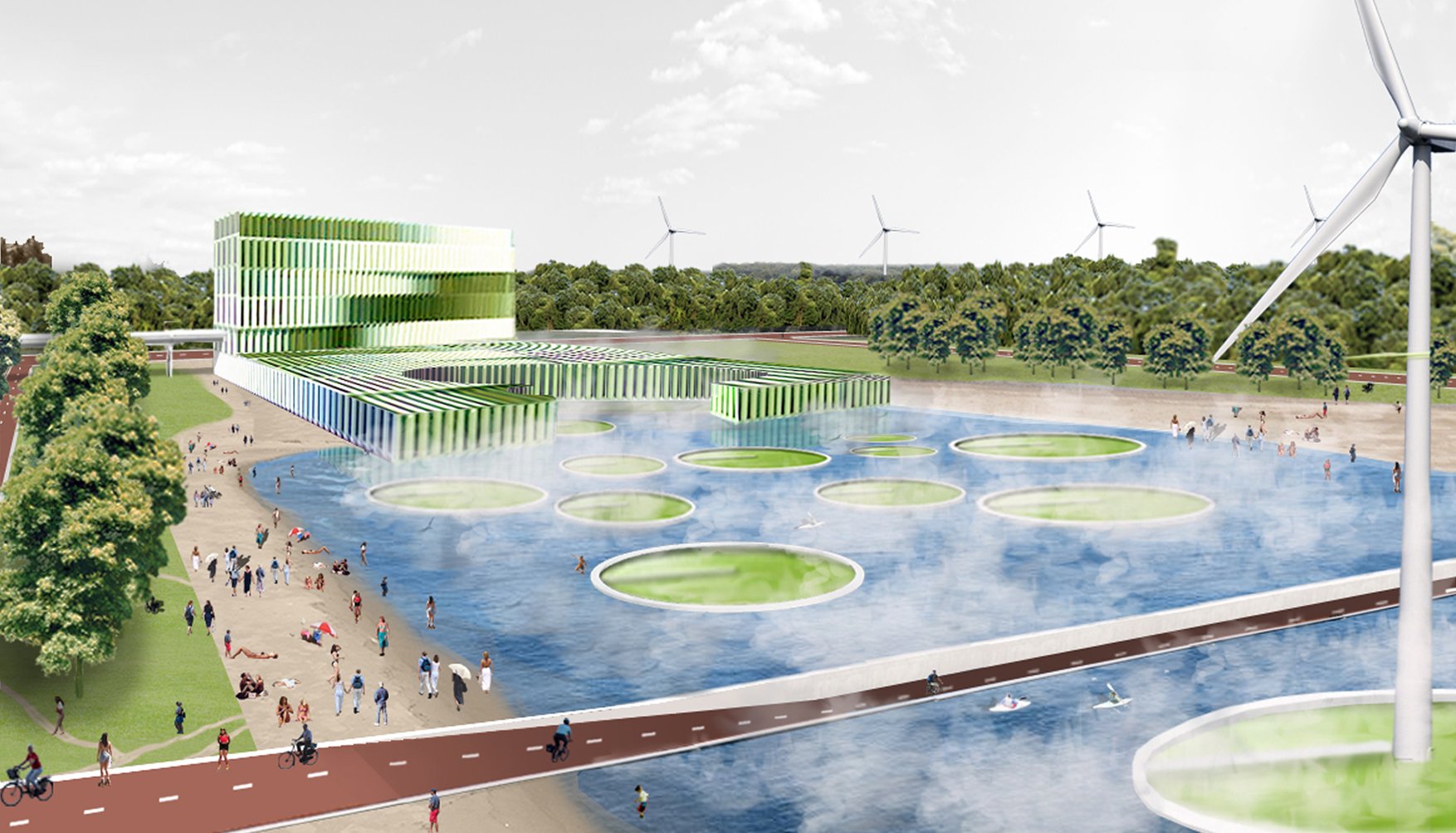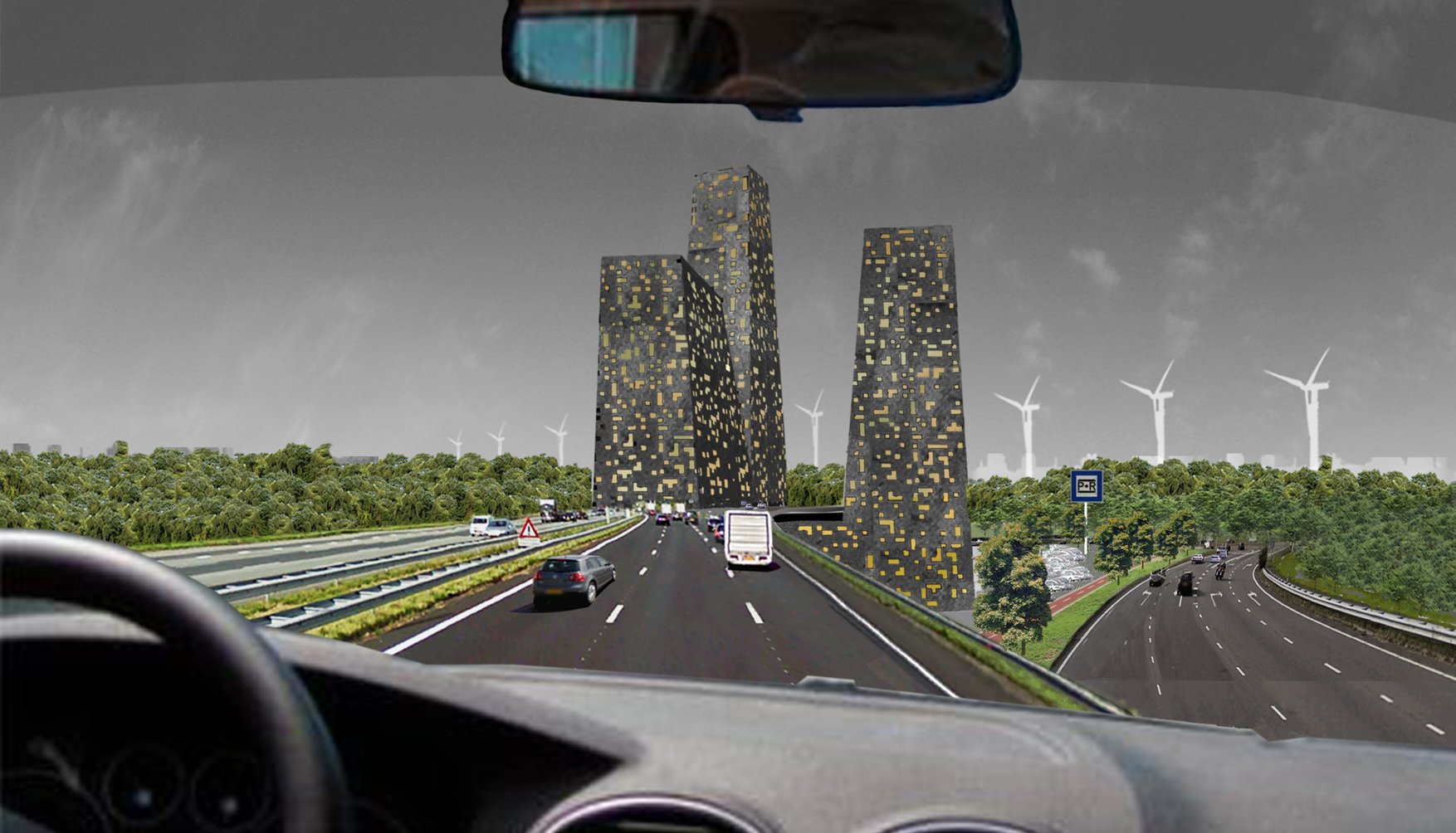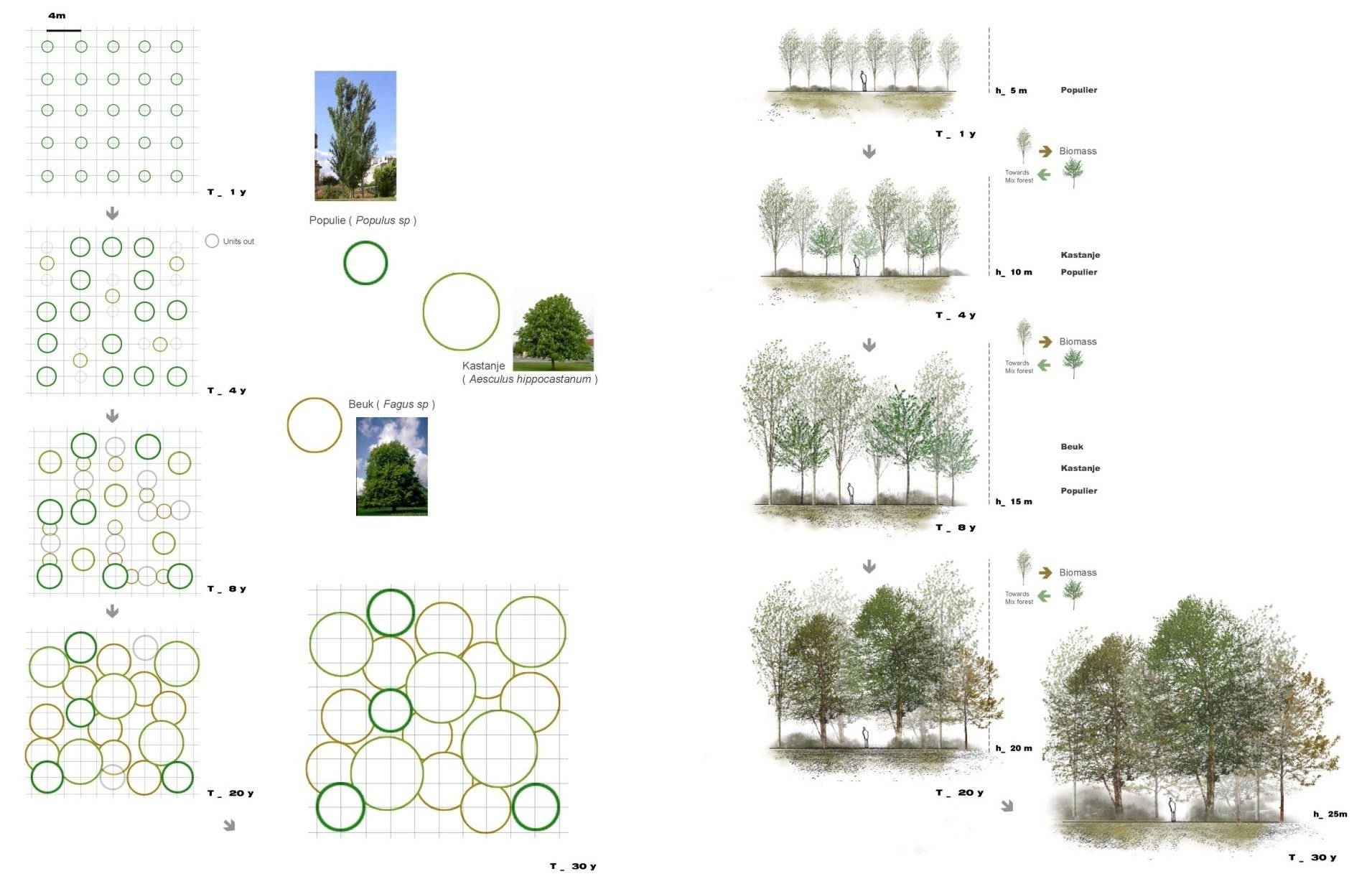
A4 Energy Forest
The Hague, The Netherlands
Location | The Hague, The Netherlands
Year | 2012
Client | Department of Urban Development, The Hague
Collaboration | Doepel Strijkers Architects, Advisory team: Andy van den Dobbelsteen (TU-Delft), Anton van Hoorn (PBL), Rob van Rees (Greenchoice)
Status | Research by design on a energy landscape along the highway A4
DE URBANISTEN propose to combine a sustainable energy production along the A4 with the slow growth of a urban forest (Nieuw Haags Bos). This new forest follows and enriches the morphological pattern of linear parks and forests on the so called ‘strandwallen’ that are characteristic for The Hague. We start with the planting of poplars on all areas that are available along the A4. With the years the forest becomes more rich and bio diverse. Step by step the forest turns the A4-zone from a major barrier into a connecting public space that invites people to go for a stroll, to linger or to cross.
The city of The Hague wants to be climate neutral in 2040. At the same time, the economic crisis puts large scale urban development along the A4 on hold. How to create possibilities for an ‘energy landscape’ in this context? A landscape that contributes to a sustainable energy production, that can be of a permanent value for the surrounding neighbourhoods and is a no-regret investment for the city of The Hague.
We propose to combine a sustainable energy production along the A4 with the slow growth of a urban forest (Nieuw Haags Bos). This new forest follows and enriches the morphological pattern of linear parks and forests on the so called ‘strandwallen’ that are characteristic for The Hague. We start with the planting of poplars on all areas that are available along the A4. With the years the forest becomes more rich and bio diverse. Step by step the forest turns the A4-zone from a major barrier into a connecting public space that invites people to go for a stroll, to linger or to cross.
The forest is also the spatial context for our approach to energy. Here we applied three principles (REAP): reduce energy demand – reuse surplus energy – produce sustainable energy. Each of these principles contributes to the development of the A4 energy forest.
The forest, together with the wood from other parks in The Hague, provides enough biomass for a small energy plant; an iconic structure that anchors the forest in the wider context. The biomass plant is plugged into a new energy loop. The planned ‘Rotterdamse Baan’ is used to connect the district heating network of Ypenburg with that of the centre of The Hague to balance energy demands.
Sustainable energy production
In the forest we can harvest clean energy by ‘planting’ wind turbines on well chosen places. We also propose an algae farm that uses nutrients, warmth and CO2 from the area. The production of biofuel can be exposed at the A4-service station. The surplus of heat from the algae farm warms a pond for swimming in the forest.
Throughout the forest we make a more dense and continuous network of bicycle and pedestrian routes that make the area accessible and that connects to the surrounding neigbourhouds along the A4. The dominant position of infrastructure is used to make extra and more comfortable transfer points between car, public transport and bicycle. All together the A4-area can become an attractive and productive urban forest with long term value.










